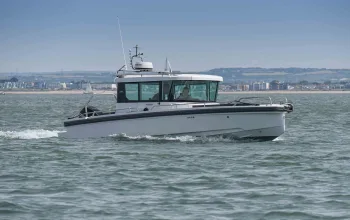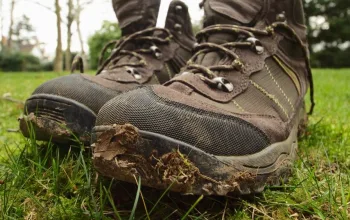Step 1 - Get the right size backpack
Before buying a pack measure your torso length (distance between C7 vertebrae and iliac crest - see diagram below) with a friend's help to get the right size. Alternatively go to a reputable outdoor store to get yourself measured up.
Women's specific packs generally have a shorter torso length and narrower shoulder yokes.
Unless otherwise stated by the manufacturer follow these general frame size guidelines:
Image courtesy of Gregory Packs
Also check that the hipbelt will fit your waist size, although this is generally less of a problem than torso length.
Unfortunately, a pack with too short a torso length will never fit correctly, if this is the case you may need to consider getting a new pack.
Top tip: The goal with backpack fitting is to have a stable load which sits right up against your back, with the majority of the load (80-90%) being carried by your hips.
Step 2 - Prepare your pack
Loosen all of the packs straps and the hip belt and load it with 4-9kg of evenly-distributed weight.
Step 3 - Adjust the hip belt
Put the pack on your back and buckle the hip belt, as a general rule the middle of the hip belt should be level with the top of your hip bone or iliac crest.
Tighten the hip belt straps ensuring that there's at least 1in of clearance on either side of the buckle. If you can't get the hip belt tight enough or it doesn't wrap around you enough then the pack may be the wrong size for you.
Top tip: Hip belts should wrap around the two pointy pelvic bones at the front of your body.
Step 4 - Adjust the shoulder straps
Tighten the shoulder straps until the pack's back panel sits against your back. Take care not to tighten so much that the load starts to transfer away from your hips.
Check that the harness yoke (where the harness straps come together at the top) is around 5cm below the C7 vertebrae which can be located by tilting the head down and finding the bone that protrudes at the base of the neck.
Top tip: At this stage you may need to remove your pack to adjust the torso length - if it has that functionality.
Step 5 - Adjusting the load lifters
Locate the load lifter straps on the top of the shoulder straps.
Slowly tighten the straps until you feel that most of the weight of the pack has been transferred off your shoulders and on to your hips, don't overtighten as this will cause a gap to form between the top of the shoulders and the shoulder straps which can cause painful rubbing.
Top tip: The load lifters should ideally rise at an angle of 30-55 degrees toward the pack body once adjusted.
Step 6 - Sternum strap adjustment
Adjust the sternum strap so that it sits roughly level with the bottom of the armpits.
Buckle the sternum strap and tighten it until your arms can move freely without restriction from the shoulder straps.
Top tip: Overtightening the sternum strap can cause the shoulder straps to dig in to your neck, if you experience this loosen it off a touch.
Final tweaks
Go for a walk! This will help you identify any tweaks you need to make once you bring body mechanics into play and will save you from spending the first few miles on the trail adjusting your pack.
Glossary
Hip belt
On larger packs the hip belt carry's 80-90% of the load. They need to be wide, well cushioned and well ventilated for this reason. Hip belts are also a great place to locate pockets for quick and easy-to-access gear.
Shoulder straps
The shoulder straps work in conjunction with the sternum strap to keep the pack close to your body, they also take a small amount of the weight of the pack and work to stabilise the pack on your back as well as helping to transfer the load to your hips. Look for well cushioned, wide, well ventilated shoulder straps if you're planning on carrying heavy loads.
Load lifters
These work alongside the shoulder straps, sternum strap and hip belt as well as the frame of the pack to form the suspension system. The idea of the load lifters is pretty much as it sounds, to lift the load off your shoulders and transfer it through the suspension system to your hips.
Sternum strap
The sternum strap is used to adjust the shoulder straps so that the arms can move freely, they also ensure the shoulder straps don't slip off.
Suspension system
The combination of frame, shoulder straps, sternum strap, hip belt and load lifters make up the suspension system. The main aim of a suspension system is to distribute weight around the body and to provide stability to the load. Suspension systems can be fixed or adjustable.






















